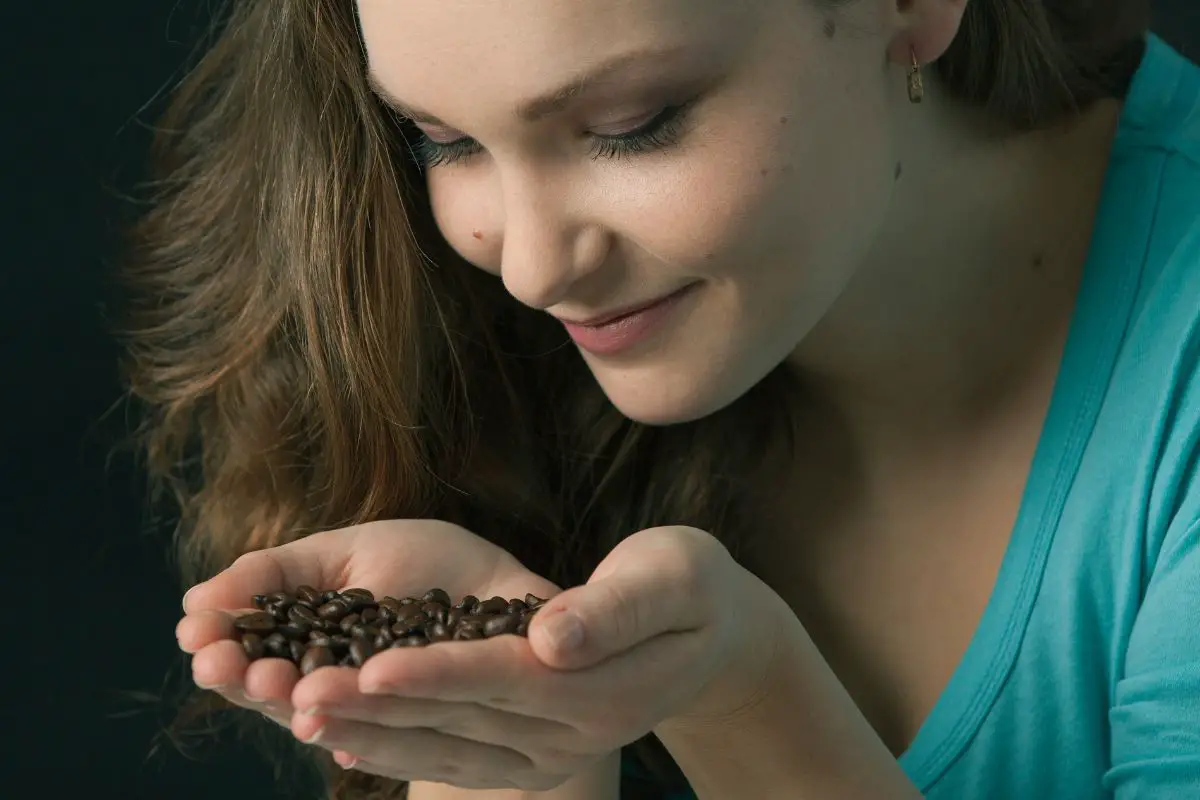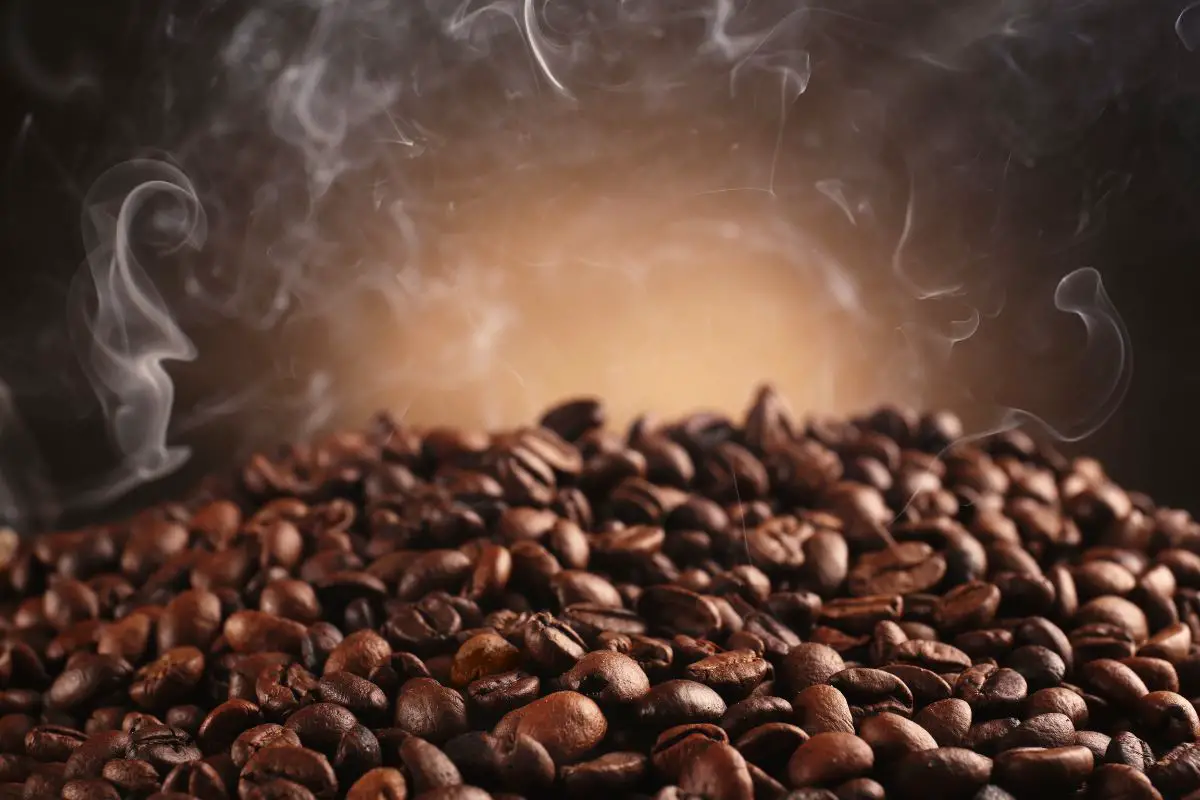The freshness of coffee beans after roasting is what determines the aroma and flavor of brewed coffee. For the best-tasting coffee, you need a supply of fresh coffee beans. Fresh beans exude complex flavor profiles upon roasting. These flavors give coffee its aromatic smell and taste. If the beans are not fresh, your brew will taste stale and won’t be enjoyable. In this article, we will show you how to tell if coffee beans are fresh.

Why Freshness of Coffee Beans Matters
The roasting process of coffee beans gives rise to various natural coffee flavors such as flowers, fruits, caramels, and chocolates. When green coffee beans are exposed to heat during the roasting process, their complex composition of amino acids, minerals, caffeine, carbohydrates, water, lipids, and proteins meld in a chemical reaction. The chemical reaction gives rise to the irresistible and nutty taste and smell of coffee.
You can only enjoy the rich, natural flavors of coffee when brewing with freshly roasted beans. Unfortunately, roasted coffee beans are prone to aging. Once they are exposed to air after roasting, they start degrading and losing their tasty flavor. Thus, it is recommended to store coffee beans appropriately and use them sooner to get the freshest brew.
How to Tell If Coffee Beans Are Fresh After Roasting

Many coffee lovers who prefer brewing coffee at home rely on store-bought beans. But how can you tell that they are still fresh? Here are some tips to guide you.
1. Check for Any Residue
To know whether your beans are still fresh, pick a handful of the beans and check whether they leave any residue on your hands. If they do, it means they are still oily, which is an indicator of freshly roasted beans. However, lighter roasts are not very oily and will only leave minimal residue. Darker roasts leave more residue. Also, check whether there is any residue inside the storage bag.
2. Check for a Glossy Appearance
Fresh coffee grounds are full of acids and oils. These compounds are soluble and give coffee its rich flavor upon brewing. These compounds are extracted during the coffee brewing process. When coffee beans are roasted, heat makes moisture evaporate from the beans. Also, the heat draws out oil-like substances that coat the surface of the beans.
The oil-like substances evaporate when exposed to air. The longer coffee beans sit out after roasting, the more oil they lose. As a result, grinding overstayed beans will give you less oily grounds and a less tasty brew. To tell if the coffee beans are fresh, check whether they look glossy. Fresh beans should look glossy. Darker roasts should look glossier than light roasts.
3. Check Whether The Sealed Storage Bag Has a Valve
Once coffee beans are roasted and cooled, they release carbon dioxide (CO2) in a process known as degassing. Degassing continues for several days or weeks after roasting. During the first few days, C02 is released rapidly. Thereafter, it is released gradually over the remainder of the degassing period.
Essentially, freshly roasted beans should be stored in a vacuum-sealed bag. As they degas inside the bag, the CO2 being released needs to escape, or else the bag will balloon. As a result, many manufacturers design the bags with a one-way valve to allow the CO2 to escape and prevent oxygen from getting in. You should check whether your packaging has a valve. If not, your beans are not degassing appropriately and may not be fresh.
4. Do a Plastic Bag Test
If your coffee beans are not pre-packaged, you can do a plastic bag test to check whether they are fresh. To do this, put about half a cup of the beans into a re-sealable plastic bag. Press the air out and seal the bag. Allow the bag to sit on your kitchen counter overnight.
If the beans are still fresh and roasted within the last 10 days, the plastic bag will have puffed up as a result of degassing. If they are overstayed, the plastic bag will remain flat since they are not releasing CO2 anymore.
5. Check The Roasting Date
You can also tell whether beans are still fresh by checking the roasting date on the package. Typically, coffee beans remain fresh on the shelf for up to two weeks. If they have stayed on the shelf longer than two weeks since they were roasted, they are not as fresh as you would want them. Also, avoid beans that do not have a date of roasting on the packaging since you cannot tell when they were roasted.
6. Check Their Color
Another way to tell if coffee beans are fresh is by checking their color. Essentially, fresh beans are dark brown. Also, their surface looks smooth and shiny. If they have any form of discoloration or they appear dull, they are likely old and will not brew tasty coffee. In case you notice any mold on their surface, it is time to discard the beans as they might make you sick.
7. Smell And Taste
You can also smell the beans to know whether they are fresh or not. If the beans smell musty or sour, it means they are no longer fresh. Fresh beans should have an aromatic smell. Also, if you brew coffee with the beans and it tastes burnt or flat, it means the beans are not fresh. Coffee brewed with fresh beans should have a rich, flavorful taste.
Summary
Coffee beans degrade over time, especially after roasting. Once roasted, exposure to oxygen causes oxidation that results in the loss of essential natural oils and flavors. Thus, you should only buy coffee beans that are closest to their roasting date for maximum freshness. Now that we have shown you how to tell if coffee beans are fresh, you are one step closer to brewing a tasty cup of coffee.